Estancia Cristina is still as remote and wild a place today as it was for the Masters family; English immigrants who founded the Patagonia Estancia back in 1914 and lived there until 1997 when the last remaining family member passed away.
Estancia Cristina is only accessible via a three-hour boat trip from El Calafate and sits smack in the middle of 3,000 square miles of rugged Patagonian wilderness that encompasses present day “Los Glaciares National Park,” Argentina’s largest. Of the half-a-million visitors who come to this immense national park each year–full of jagged peaks cut by dozens of massive glaciers spilling from the Southern Patagonia Ice Cap into electric blue lakes–99 percent only fly into the crowded tourist town of El Calafate just to make a day trip to the Perito Moreno Glacier. Here, they elbow their way among the crowds to get that perfect picture, whereas an insightful few make the decision to come out to Estancia Cristina for a few days of wilderness bliss and have the Upsala Glacier virtually all to themselves.
Spread among five charming houses, Estancia Cristina offers 20 individual guest rooms, each with dramatic views towards Cerro Norte, draped in hanging glaciers. Days are filled with guided hikes and 4x4 excursions to explore the Upsala Glacier, canyons full of prehistoric fossils, the dramatic viewpoint atop Cerro Carnero, or the roaring Cascada del los Perros. Gauchos look after a stable of around 40 horses which are a joy to ride up and down the Caterina River Valley, where fisherman can take their chance at the gigantic Chinook that spawn here yearly. An incredible museum on the Estancia showcases the rich history of Estancia Cristina and the story of the Masters’ family love affair with the valley, a “must” experience for any visitor to bring a special appreciation for the remoteness of this location. In the evening, guests gather in the “Octogano,” or common building, to sip Malbecs by the fire and pour over maps of tomorrow’s adventures before devouring Argentine steaks grilled to perfection and fresh vegetables from the gardens. Only open from October to April, days at Estancia Cristina seem never-ending–in a good way– with close to 17 hours of daylight at this extreme Southern latitude. Tucking into a cozy bed at 11:30pm, listening to the fierce Patagonian wind rage outside, and watching lenticular clouds over the peaks turn red at sunset is an unforgettable Patagonia experience.
PROPERTY FACTS
20
All Same Category (interconnecting rooms are available)
All Inclusive: Transfers, Lodging, Meals, Non-Alcoholic Beverages, Guided Excursions
Yes, via-Satellite only in the common area, not in rooms
Seasonal: Opens October 15th and Closes April 30th
None
Number of Rooms:
Room Categories:
Booking Options:
Internet:
Dates of Operation:
Spa Services:
Direct Reservation:
Starting rates:
$1,200, per person, per night
Starting All Inclusive:
LOCATION: Los Glaciares National Park, Argetnina
Closest Airport:
The closest airport is El Calafate, Argentina (FTE) which receives daily direct flights during the season from Buenos Aires, Bariloche, Ushuaia, Cordoba, and Rosario. There are also international flights available to Puerto Natales and Punta Arenas, Chile.
Estancia Cristina is only accessible via a three-hour boat ride from Puerto Bandera outside of El Calafate, a service provided by the Estancia. However, there are a handful of independent hikers and organized groups that trek overland between Estancia Helsingfors and Estancia Cristina each year, a wilderness trek of between 2-4 days in duration.
Unique Arrival & Departure Options:
WHEN TO VISIT
Estancia Cristina is only open from October 15th to April 30th every year. Patagonia is notorious for strong wind and fickle weather; even during the height of summer it is possible to experience all four seasons in one day, from sunshine to snow storms. Basically, October and November are considered springtime and also a shoulder season—you can expect long daylight hours and cool to warm temperatures, with snowfall still possible at higher elevations. December, January, and February are summertime and peak demand time for travelers, with extremely long day with up to 17 hours of daylight at the austral solstice! Wind is always a factor in Patagonia but these summer months can be the windiest. It is important to book ahead if coming in the December to February timeframe. March and April are getting into autumn and a favorite of photographers as the native lenga and nirre trees turn bright red and yellow. These months are also the least windy of the months Estancia Cristina are open.
FOR FAMILIES
Although there is no minimum age limit for overnight guests at Estancia Cristina, guided excursions for very young children are limited as most involve a few miles of hiking or horseback riding. The area is wild and vast surrounding the Estancia, and children will enjoy exploring the gardens, watching the gauchos take care of the horses, and exploring the miles of shoreline along Lake Argentino.
There are two connecting rooms available in each of the five villas.
RECOMMENDED LENGTH OF STAY
While one night is absolutely worthwhile, you will be limited in the number of hikes and excursions you can do. Two nights is a good amount of time to do most of the highlight hikes but limits time to rest and enjoy the location. Three nights is perfect for very active guests that want to explore all the hikes, do some horseback riding plus fit in some leisure time to perhaps sit in a cozy armchair, looking out at the scenery, and read a good book.
UNIQUE SELLING POINTS
Right in the middle of Los Glaciares National Park, away from the tourism crowds of El Calafate and the Perito Moreno Glacier, Estancia Cristina allows visitors to see a wild part of the national park not seen by 99 percent of visitors who just visit El Calafate and Perito Moreno for a day or two.
For people who love history, the story at Estancia Cristina is incredible and very well told through the onsite museum which chronicles the history of the area from early explorers, the history of the Masters family who founded the Estancia in 1914 and lived there until 1997, as well as displays on scientific explorations, the foundation of the national park, military use, and climbing expeditions. To spend a few nights at the Estancia gives visitors an innate appreciation for the hardships (and delights) the Masters family must have experienced in this remote area for so many years and so long ago.
The variety of terrain here for hiking is incredible, from thick native forests, viewpoints of Upsala and dozens of other glaciers, waterfalls, canyons full of prehistoric fossils, rivers, creeks and lakes, and rocky peaks to climb and desolate shorelines.
For fishermen, Estancia Cristina is an “under the radar” gem for catching world-record Chinook and rainbow trout. It is an ideal place for a family that has one or more fanatical fishermen but others prefer to hike and horseback ride.
Ideal for those that truly want to “get away from it all” and be surrounded by raw nature.
BEST COMBINED WITH
Most visitors who come to Estancia Cristina will spend an extra night and day in El Calafate to view the Perito Moreno Glacier at a minimum. However, it is possible to fly from Buenos Aires and arrive to Estancia Cristina on the same day, as well as depart the Estancia and fly back to Buenos Aires in the same day, in order to completely avoid the crowds of El Calafate and Perito Moreno.
From El Calafate, it is a 3.5 hour drive across the border to reach Torres del Paine National Park in Chile.
Due to El Calafate being a convenient stopover on flights between Buenos Aires and Ushuaia, this is often a popular combination of Los Glaciares National Park and Tierra del Fuego.
Same can be achieved with flights to Bariloche, allowing visitors in Argentina to visit the heart of Patagonia and the Lakes District in the same trip.

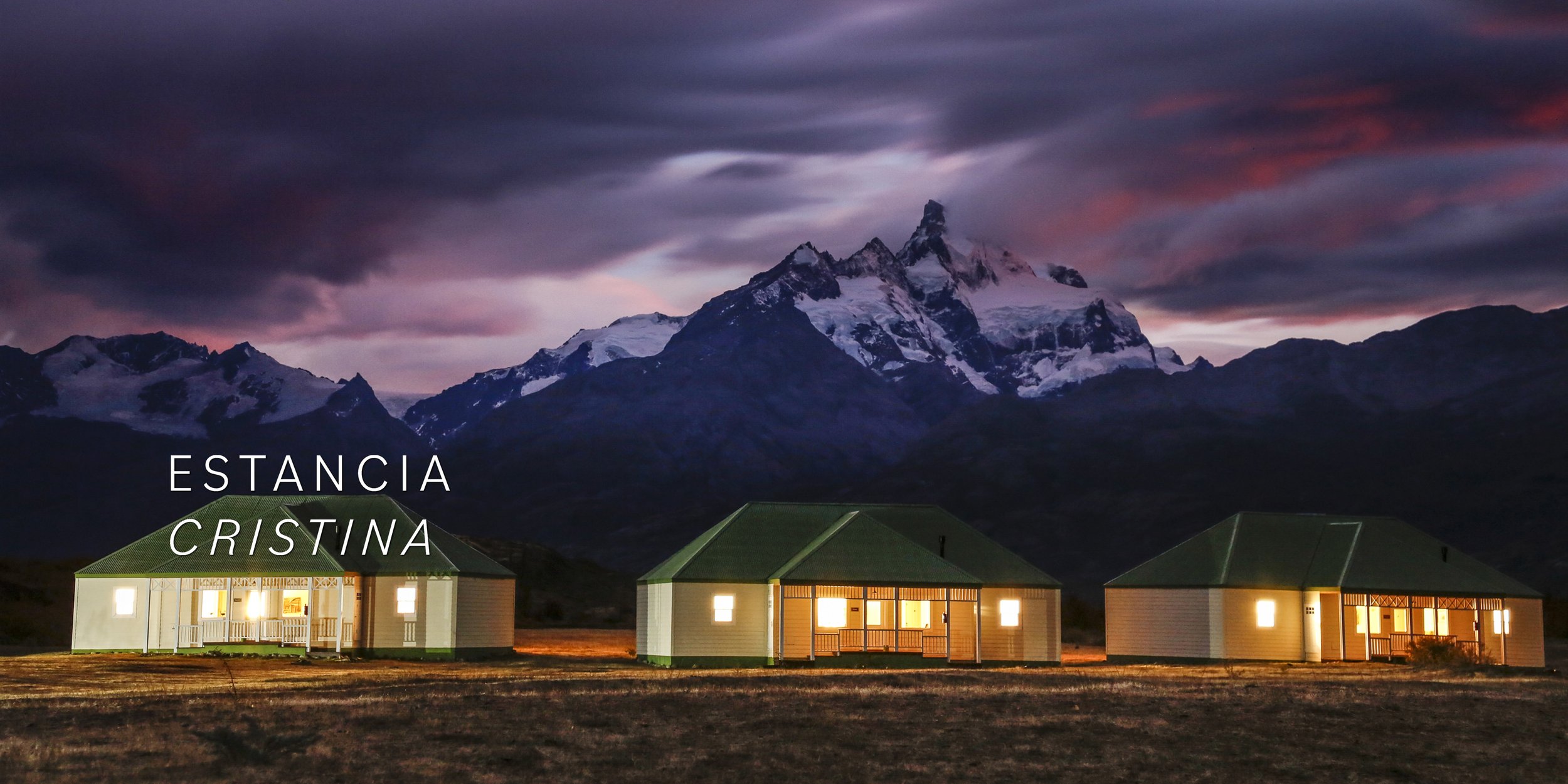
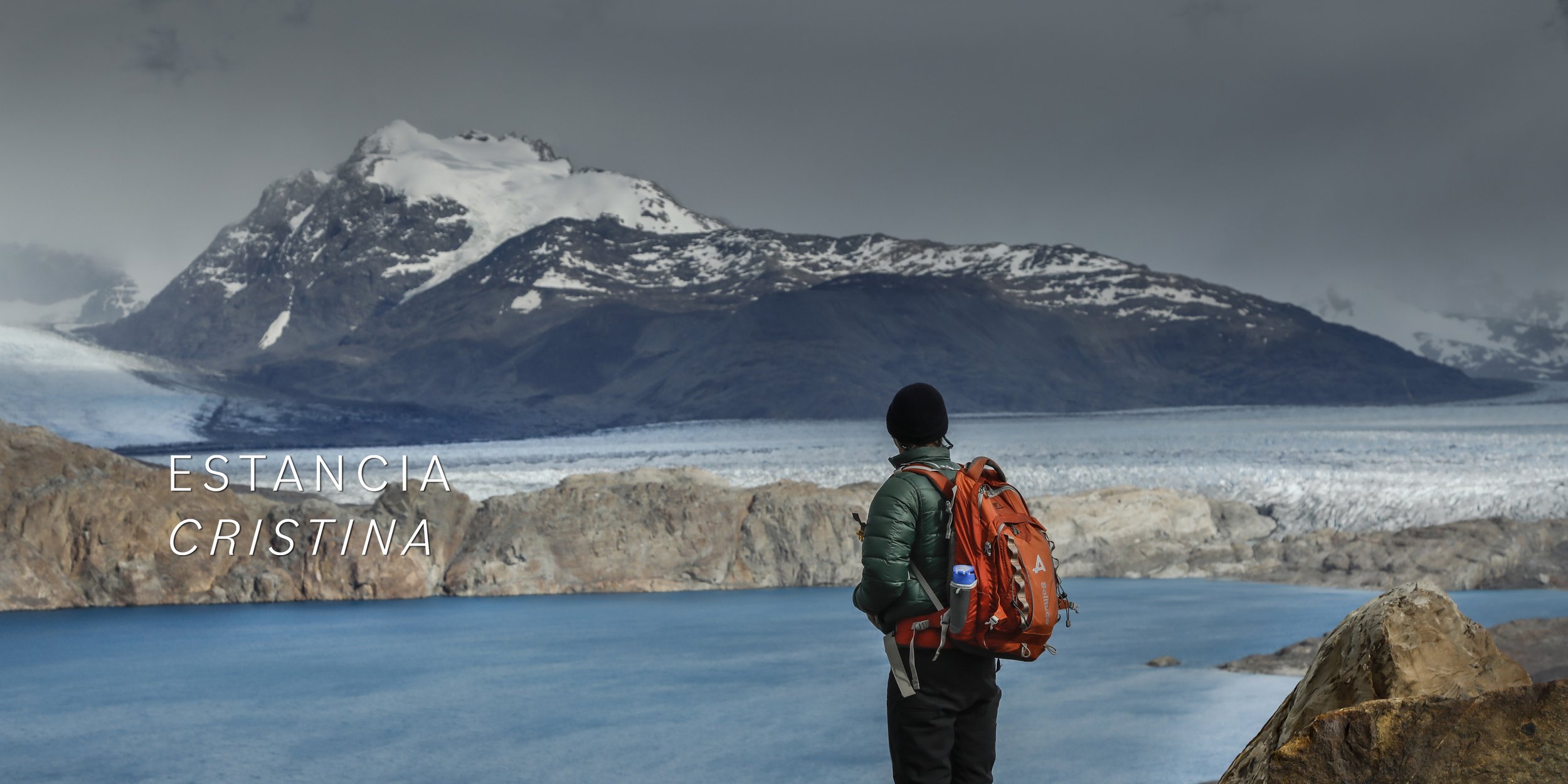
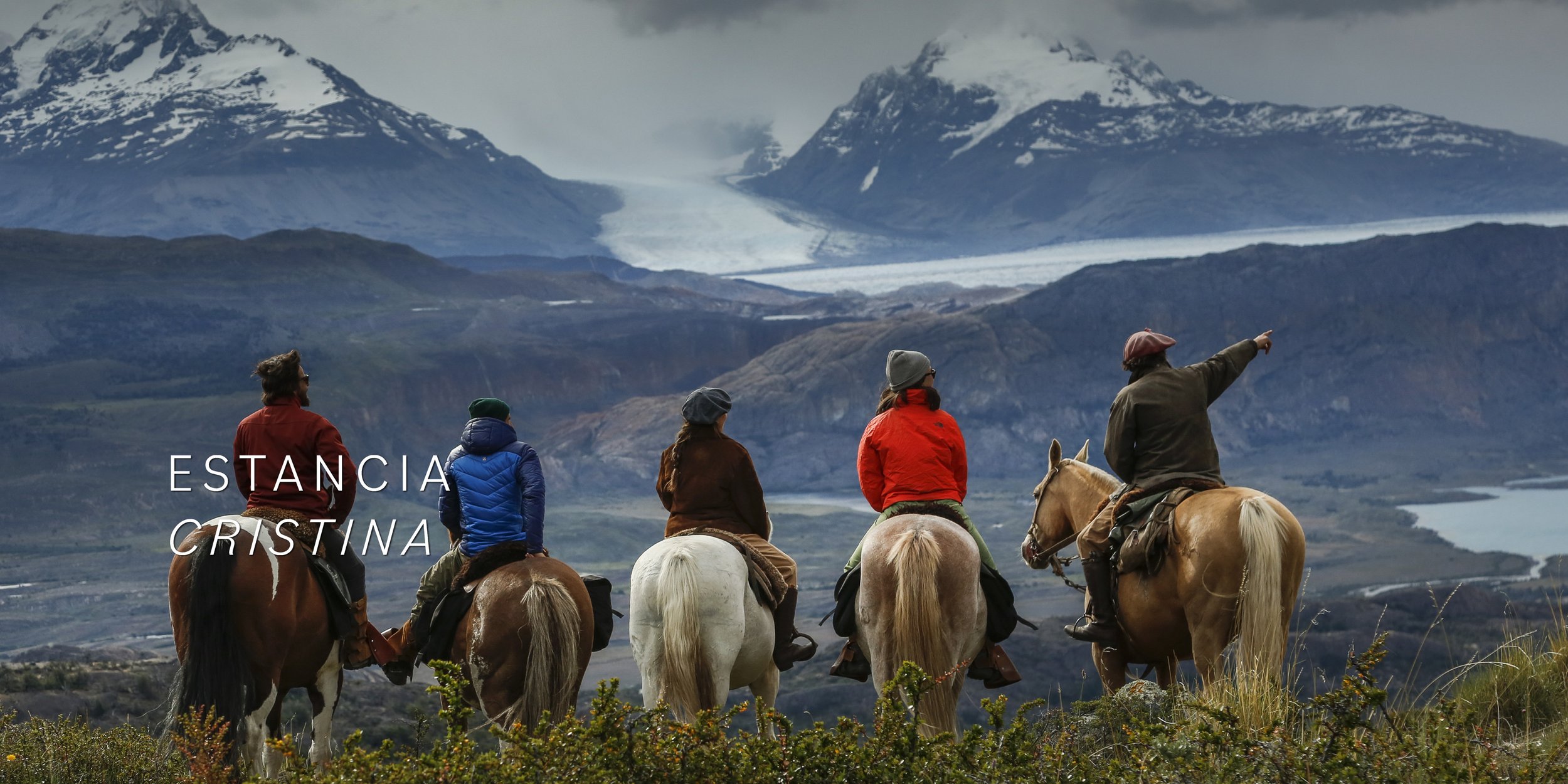
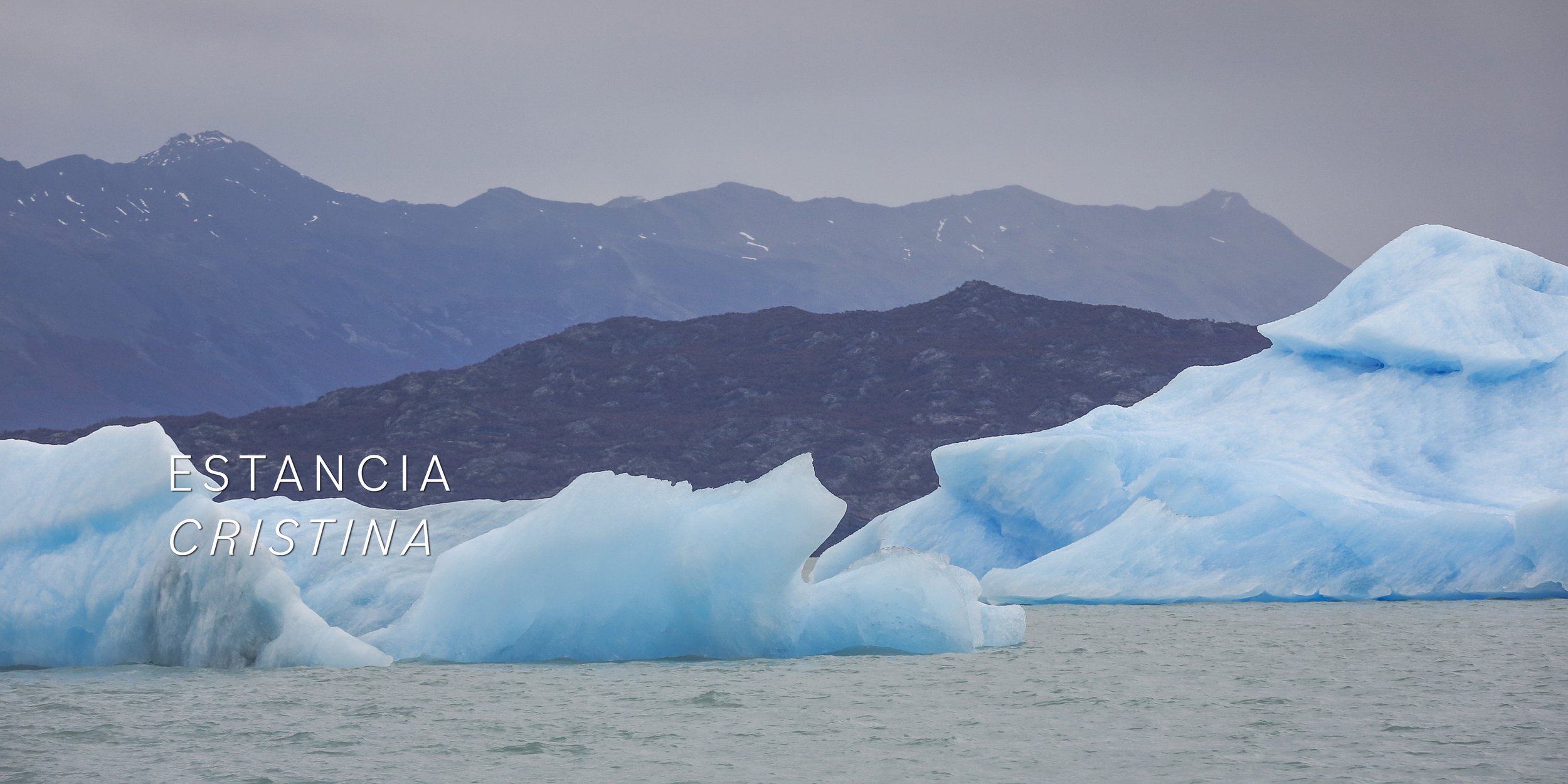
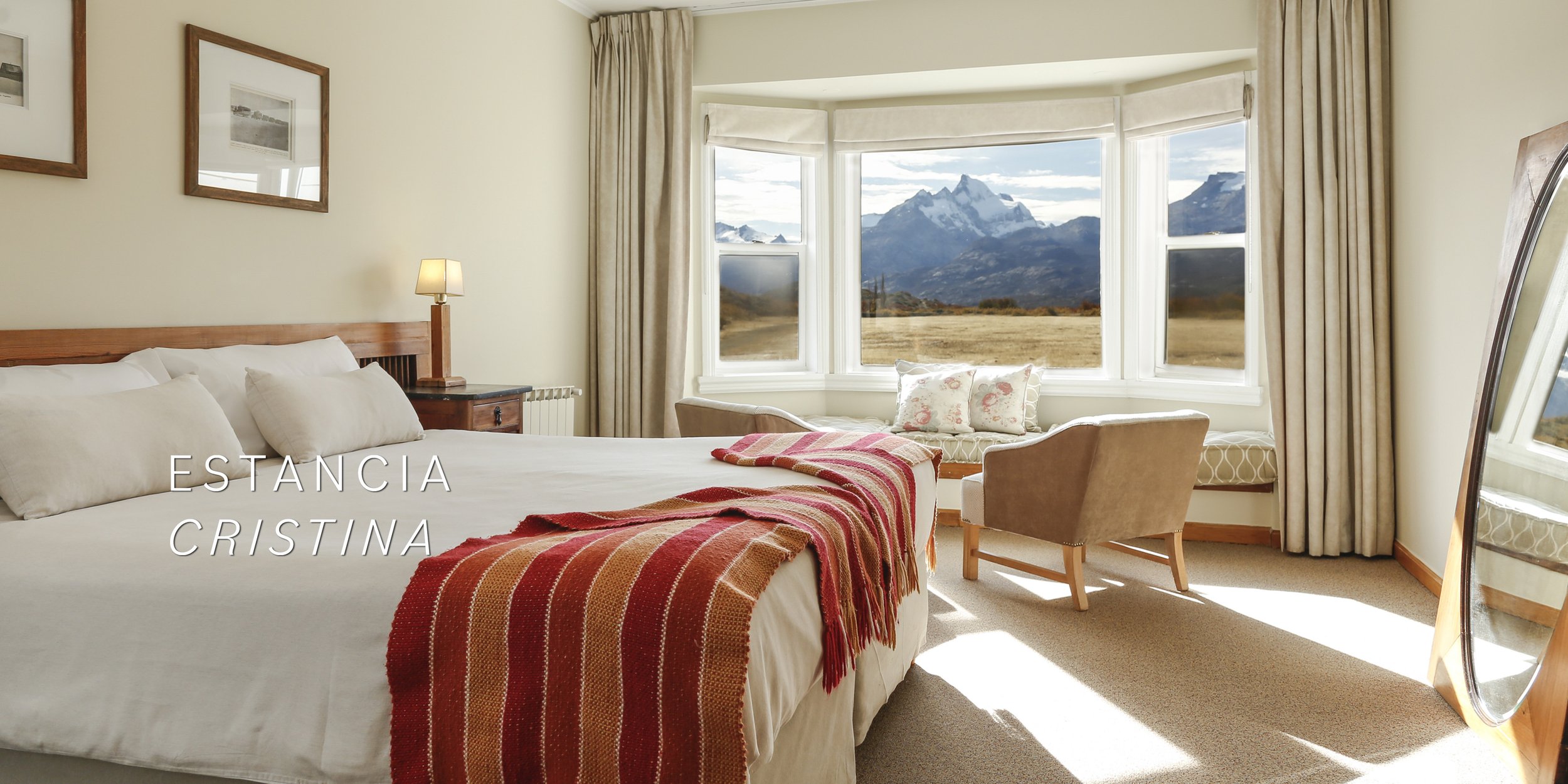
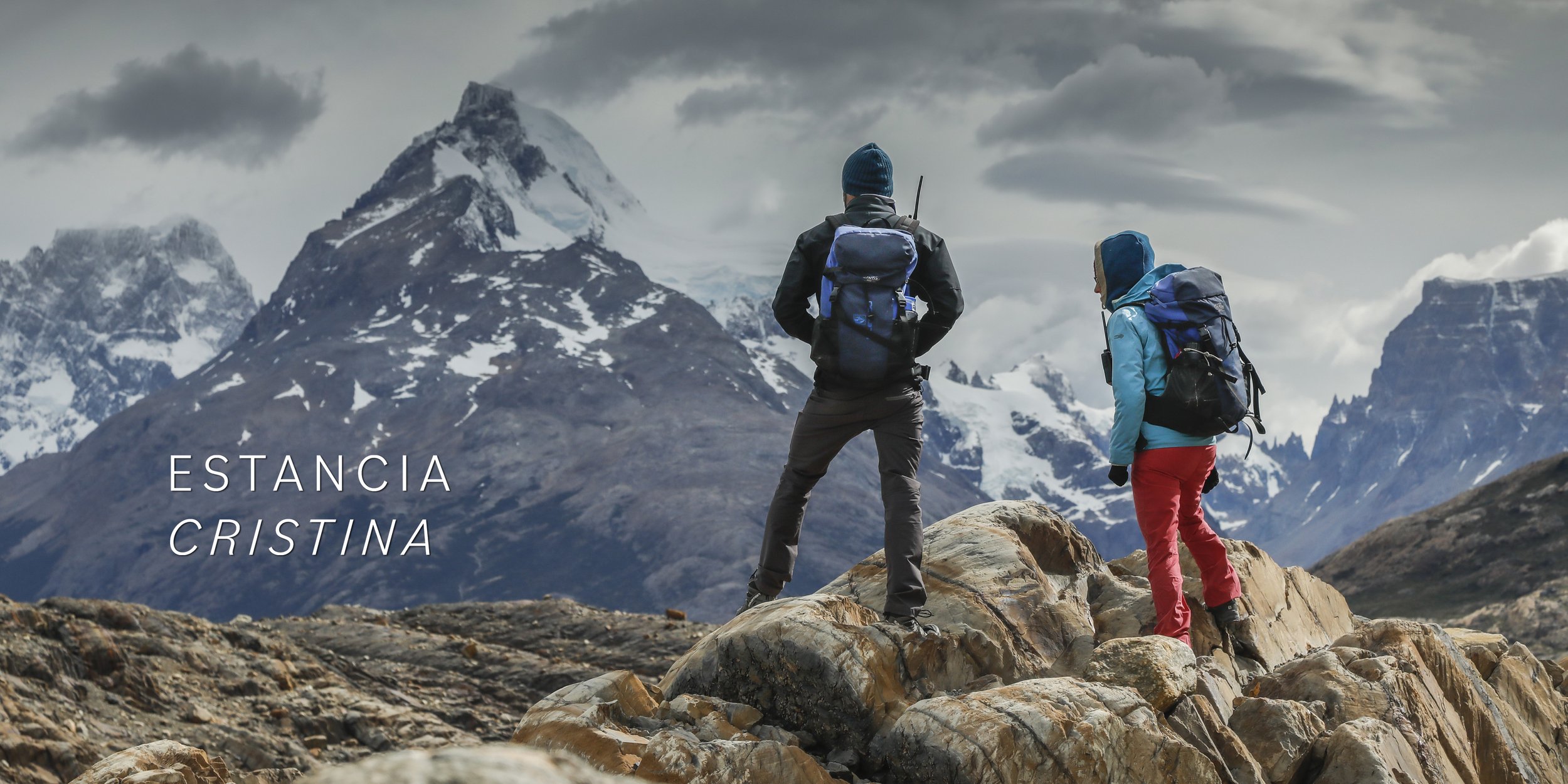




Just what would it have been like in 1913 for English immigrants, Joseph and Jessie Masters and their 11-year-old son Herbert and 9-year-old daughter Cristina, when they first made this 30-mile journey across the lake by rudimentary steamship? To land in this never-before-seen wilderness, be dropped off and left to create a working Estancia from scratch—a place they would spend the next 80-plus years building out a life and legacy?